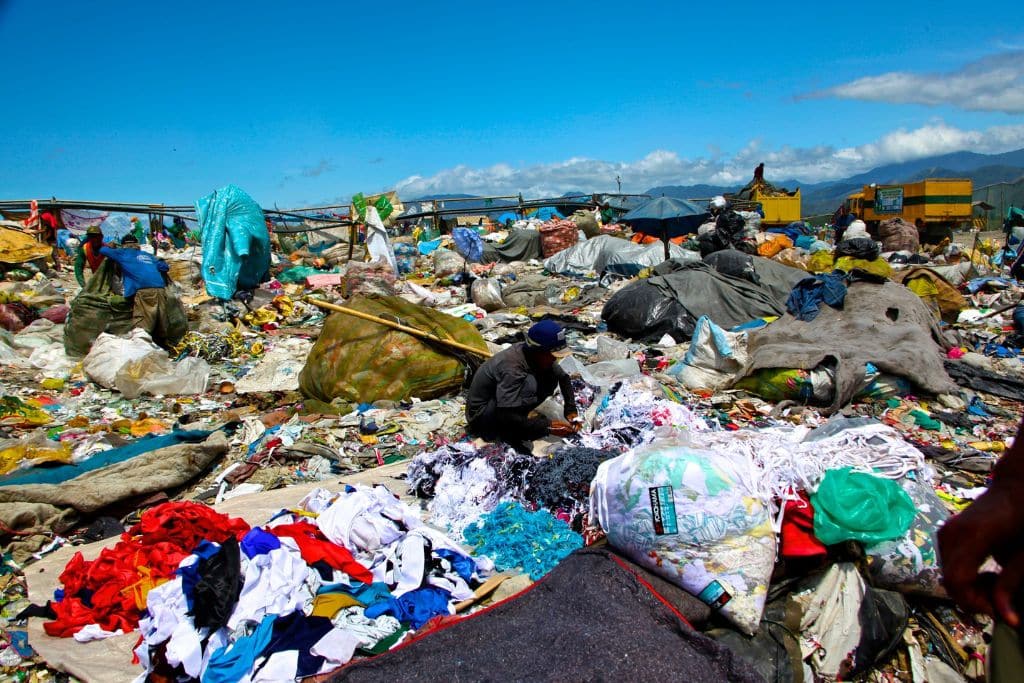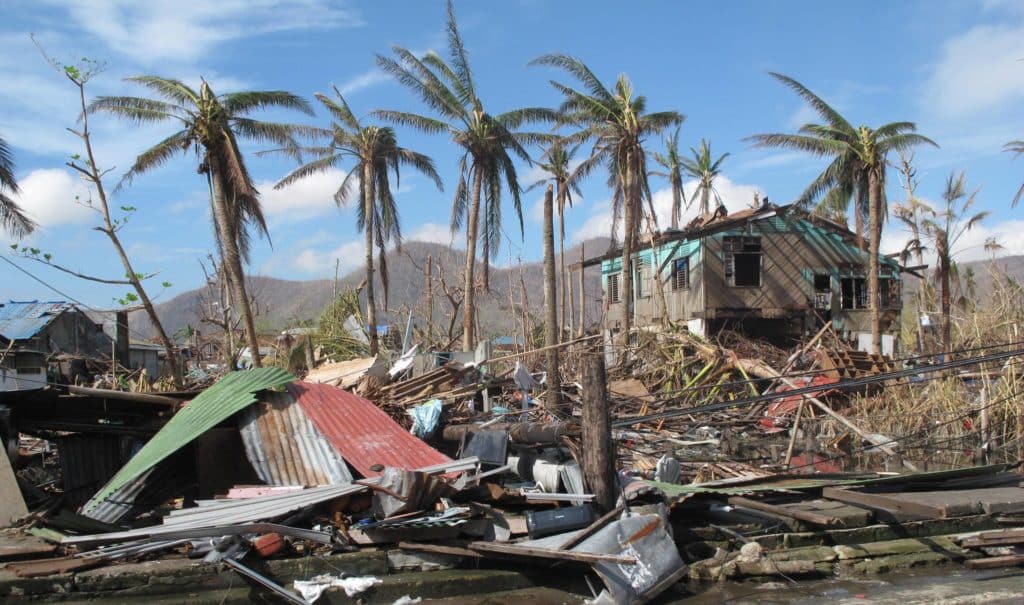In the run-up to COP28, the urgency intensifies for the world to address the ongoing climate crisis. Although activities in the Global North herald the climate crisis for the most part, some nations in the Global South also contribute to a host of environmental issues like air and plastic pollution. Here are the top 4 environmental issues in the Philippines and the government’s approach to curtailing them.
—
4 Biggest Environmental Issues in the Philippines in 2024
1. Air Pollution
Over the course of the year, air pollution has become particularly problematic in the Philippines. Going by World Health Organization’s (WHO) health and environment scorecard, the country records an annual mean of 24 micrograms per cubic metre (µg/m³) for fine particulate matter, significantly surpassing the recommended maximum level of 5 µg/m³. For the most part, air pollution in the Philippines stems from the burning of fossil fuels like coal and oil. Considering that 53% of the population is without access to clean fuels and technology for cooking, this is bound to further exacerbate air quality in the long run.
Air pollution in the Philippines is also caused by vehicular emissions, particularly in areas like Metro Manila. In 2022, other recorded surges in air pollution outside Metro Manila include the San Fernando City Station in Pampanga, Antipolo City Station, Biñan City Station, Puerto Princesa City Station, and the Davao City Station.
According to William Cuñado, Environmental Management Bureau Director at the Department of Environment and Natural Resources (DENR), lifting Covid-19 restrictions particularly deteriorated air quality in Metro Manila. For the most part, this was due to an acute surge in the number of vehicles on the street, which had fallen to 10% in the country’s National Capital Region during the lockdown period.
Another factor was the prevalent use of firecrackers during new year celebrations. Given that the particulate matter (PM10) in firecrackers contains a mixture of carbon, sulfur, and other fine particles that pose a danger to public health, the DENR affirmed its commitment to controlling air pollution spikes of this nature. However, for this approach to be successful, it would require local government units to enforce the available Executive Order 28 on the controlled use of firecrackers.
On another note, although the government introduced the Clean Air Act of 1999, groups like Greenpeace Philippines and the Center for Research on Energy and Clean Air (CREA) point out its outdated nature in the international community. For this reason, there have been pressing calls for the government to update its standards to meet the reality of air pollution in the country.
You might also like: Billionaire Finances ‘World’s Largest Project’ to Boost Solar in Philippines
2. Plastic Pollution
Among the environmental issues in the Philippines is also plastic pollution, a particularly severe problem for the country. Evident by the World Bank’s use of the word ‘staggering’ to describe the situation in the Philippines, an insufficient waste management system, coupled with a high dependence on single-use plastics set the scene for the country’s annual generation of 2.7 million tons of plastic waste.
Much like any rapidly developing country, the Philippines faces unsustainable plastic consumption due to an inefficient recycling system. Estimates show that the country loses around US$890 million to unrecycled plastic products. However, despite the considerable scale of plastic pollution in the Philippines, residents of the country and some companies have been at the forefront of recycling efforts so far. For instance, companies like Infinity Eight Trading and Marketing Corporation buy plastic waste from scrap dealers, turn them into pellets, and resell them as raw materials to remake food cartons and bottles.

While critics trace the Philippines’ plastic pollution problem to the poor enforcement of laws, the government, nonetheless, introduced its Extended Producer Responsibility Act (EPRA) in 2022. With this new law in play, companies are mandated to create EPR programs for plastic waste reduction, recovery, and diversion. Accordingly, by 2028, companies are expected to have achieved an 80% offset or recovery of their plastic product footprint.
You might also like: 3 Lessons from Waste Management Solutions from Around the World
3. Marine Pollution
As the third-largest contributor to marine plastics, marine pollution accounts for one of the most pressing environmental issues in the Philippines. Considering that the country generates over 2 million tons of plastic waste every year, the World Bank reports that an estimated 20% of this waste ends up in the sea. Depicting the state of marine pollution in the Philippines, Theresa Lazaro, the country’s Foreign Affairs Undersecretary, cited reports that “there would be more plastics than fish by 2050, while oceans would be overheated and acidified if people fail to act now”. For this reason, marine pollution also endangers biodiversity in the Philippines.
In recent years, the government has initiated various measures to curb marine pollution in the country. One of them is the Philippine Port Authority’s signed agreement with the World Wide Fund for Nature (WWF) Philippines to address marine pollution around ports. Through this agreement, the objective is to achieve a 50% reduction in plastic waste leakage in the Port of Cagayan de Oro, the Port of Batangas, and the Manila North Port.
Another response to marine pollution in the Philippines is the government’s implementation of a National Plan of Action on Marine Litter. Envisioned to achieve zero waste in Philippine waters by 2040, the plan seeks to set a wide range of policies into motion, ranging from public-private partnerships to an improvement of public awareness about marine pollution. According to the Organisation for Economic Co-operation and Development (OECD), the approach’s rationale has to do with a recognition that most of the marine plastics polluting the sea are traceable to land-based sources, such as an improper waste disposal system. For this reason, an integrated effort that also curbs land-based plastic pollution while also educating the public on waste management practices is envisioned to be more effective.
While the government envisions the aforementioned EPR law as a step in the right direction, there are many other factors that need to be considered. For instance, much like earlier efforts to curb plastic and air pollution in the Philippines, a significant level of commitment will be a crucial determinant of its effectiveness.
4. Sea Level Rise
Floods have been recurrent in the Philippines in 2022. On Christmas day alone, erratic rains trigger devastating flooding in Northern Mindanao and the Vasayas region that killed at least 51 people.
This comes at the back of the country topping this year’s World Risk Index, which assesses sea level rise (a cause of coastal flooding) as one of its indicators. In line with the problem, Earth.Org’s projection shows that residents of the country’s capital city, Manila, will be displaced by 2100 if the current trend continues. At the moment, Manila is already subsiding at 20 millimetres per year, surpassing the mean sea level rise almost tenfold.
You might also like: Flooding Will Hit Asia the Hardest- Report
So far, mitigation efforts have not been very successful. Nonetheless, in 2022, the DENR announced a plan to install infrastructures like floodgates, pumping stations, box culverts, and additional drainage connection systems. This was in addition to declogging operations carried out across drainage canals in Manila. Accordingly, DENR also plans to particularly focus on the city’s low-lying areas to abate coastal flooding.
Flood mitigation may be crucial to the Philippines’ strategy on sea level rise, however, there are concerns that the government’s approach fails to consider its long-term threat. For the most part, this is due to solutions such as the decision to wall off the coast only partially. Although the several gaps in the seawall were necessary to provide fishing boats access to the bay, however, Vonne Villanueva, disaster risk reduction and management officer in the City of Navota, said the coastline may have to be closed to truly protect the city from rising sea levels.
Featured image by Henry Donati/Department for International Development (Flickr)
This story is funded by readers like you
Our non-profit newsroom provides climate coverage free of charge and advertising. Your one-off or monthly donations play a crucial role in supporting our operations, expanding our reach, and maintaining our editorial independence.
About EO | Mission Statement | Impact & Reach | Write for us
If you enjoyed reading about the environmental issues in the Philippines, you might also like: 5 Biggest Environmental Issues in India in 2024


















